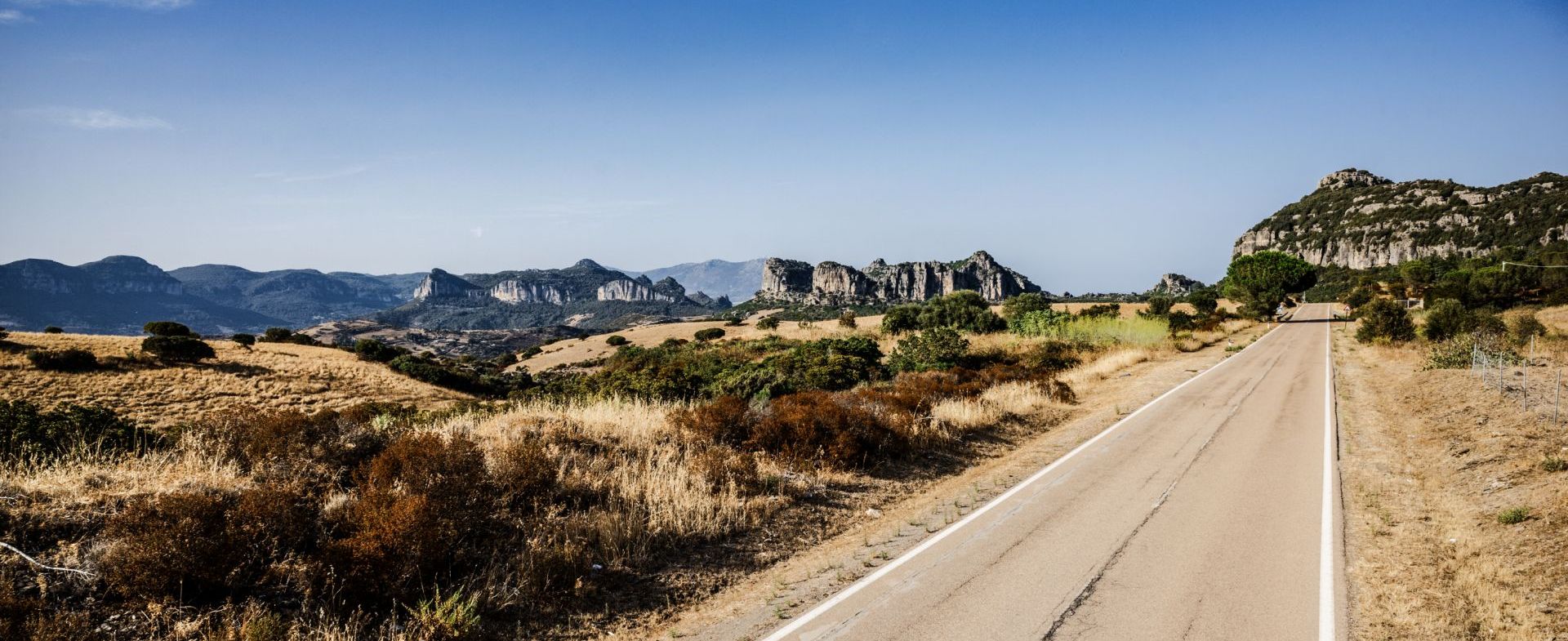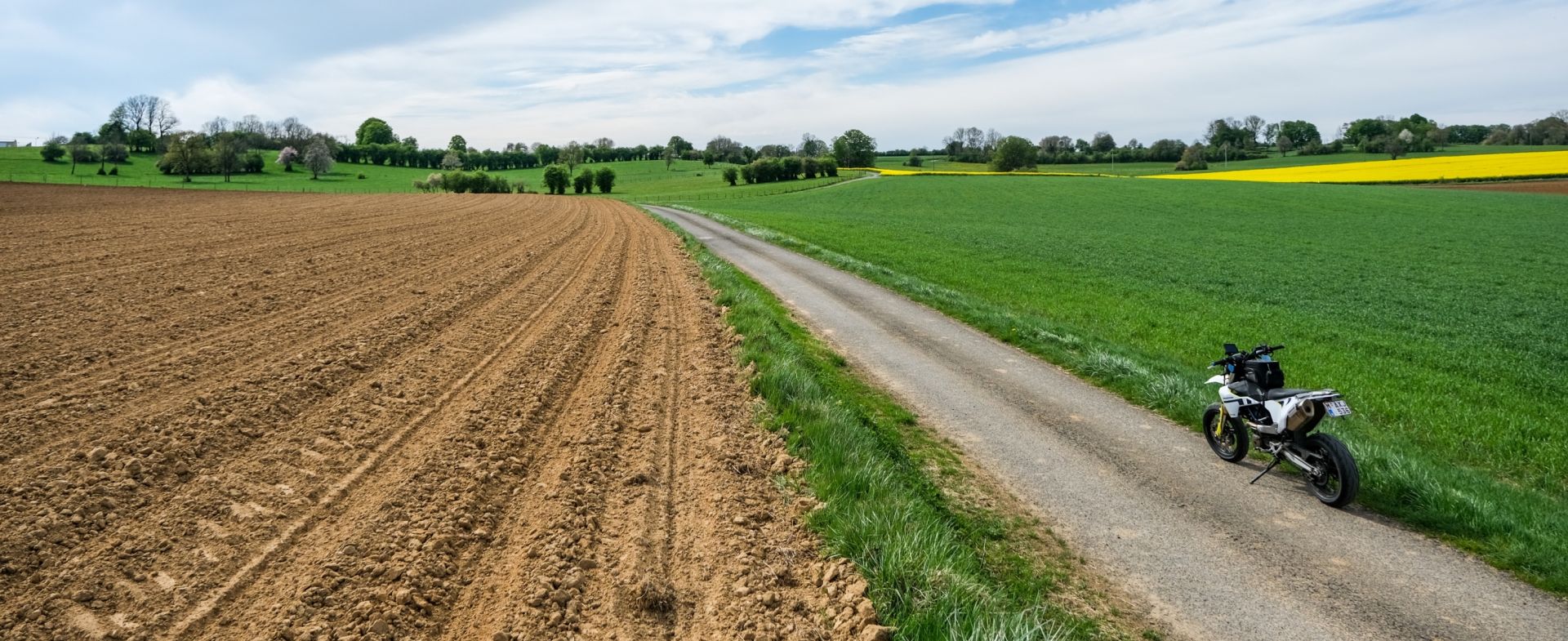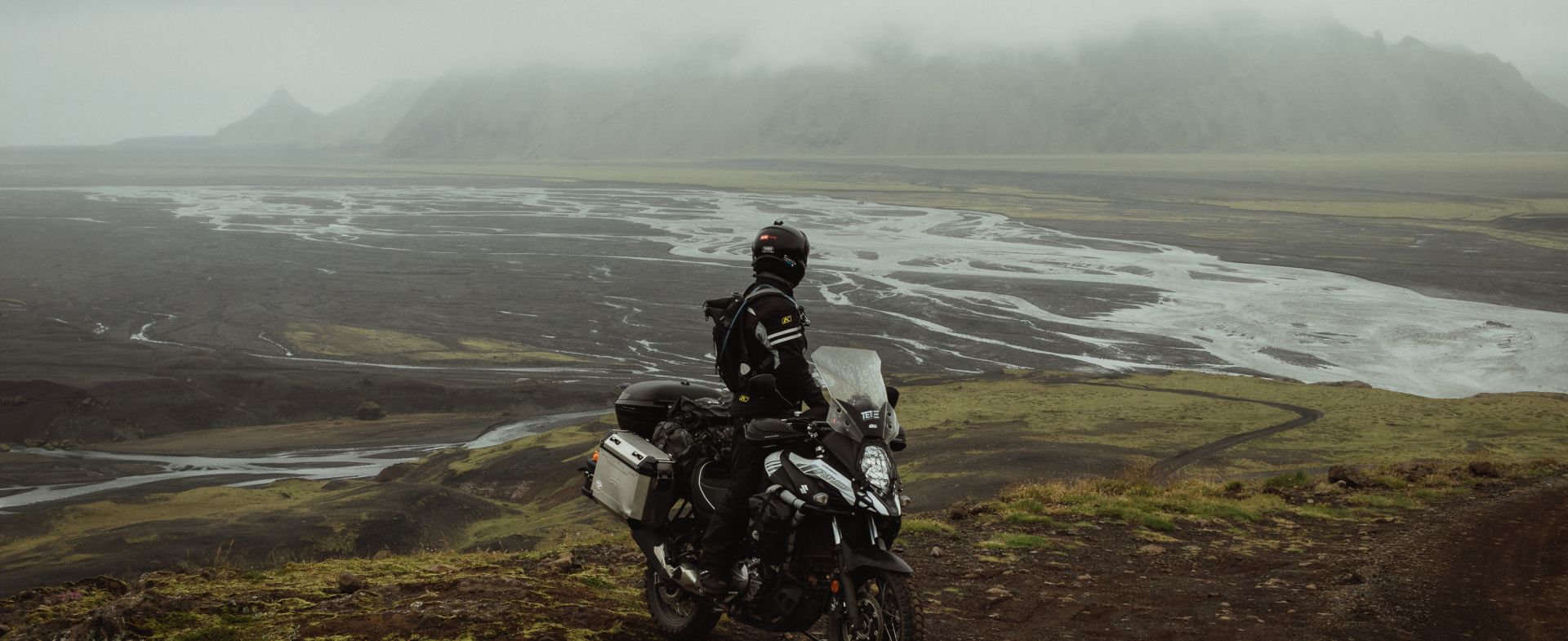Top five winter destinations for bikers: the 2020-edition
Motorcycle Diaries
Get out your extra padded gloves, three layers of jackets, wool socks, and fire up your handgrip and seat heating: Winter‘s coming! The time of year to slither around, while the cold sweat on your back freezes as you try to wrestle your bike the rime. Or… you could ride your way out of misery and opt for the migratory way of spending your winter: in the deep south. Don’t worry, we’ve got you covered with our five favorite winter destinations for 2020!
Morocco
Our first go-to destination is the magnificent kingdom of Morocco, the land of slaloms between goat, camel, and strands of pockmarked asphalt and hardly a tad further than southern Spain or Portugal. The part of the earth where more sweet-sweet tea than petroleum derivative is consumed, and where fumes from the ever-steaming tajines mixed with sand, come blowing through the vents of your helmet.
From the dunes of the Sahara to the summits of the Atlas, Morocco is a real treat for adventurous motorcyclists of any make. Ouarzazate - the epicenter of this trip and nicknamed ‘the door of the desert’ - is located just beyond the reach of the shadow that the Atlas Mountains cast on the Moroccan hinterland below Marrakesh (about 3,5 hours away), and is a remarkable city in the surrounding desert and moon landscape.
Although temperatures can drop quite a bit during the winter months (min. 2°C, max. 16°C), December and January are the two months of the year with the lowest chance of significant precipitation in the area around Ouarzazate - with the lowest chance of rain (or even snow) occurs around mid January. We’re starting this trip on a part of the N9 connecting Marrakesh and Ouarzazate: a 37 kilometer-long part between Toufliht and Aguelmouss, which wreathes its way over the fabulous Tizi-n-Tichka Pass.
Nobody knows when it will be completely finished, but it’s rideable so you should at least consider riding it. A stunning adventure which takes you towards the better side of Morocco: over the Atlas. Prepare to be amazed. Just before Aguelmouss, turn left on the P1506 to enjoy a smaller, worming road between the latter and Ait Ben Haddou. A 45-kilometer detour over partly new, partly old asphalt, which is a nice alternative for the brilliant N9.
Afterwards, we’d suggest you to have a run at the N10 and its glorious views over the Atlas. If you’re a cinephile, don't forget to stop at the fuel station between Ouarzazate and Anezal - as it was used in the Hollywood Horror-blockbuster The Hills Have Eyes. If you do, feed the dogs in the back, they're always hungry! And remember, there’s no cannibalistic clan hiding in the mountains along the way, as there was in the movie. Director Wes Craven was inspired by the story of Sawney Bean, the head of a wild Scottish clan who murdered and cannibalized numerous people during the Middle Ages. And Scotland is 4.000 kilometers away…
But let’s not wander off subject, as the N10 has a few extra aces up its sleeve: the equally beautiful stretch from Anezal to Tazenakht for instance, which curls for 24 kilometers before arriving in the city and some extra fun awaits: the light offroad piste towards Tarmigte! Don't get scared of offroad pistes in Morocco, as long as the weather is good and it's a little maintained. This one is. And it's most definitely worth riding it: a 57 kilometers shortcut through redrock hinterland, which makes you feel like you’re the sole soul on the planet. A quiet and quite exceptional experience.
Sardinia
Yes, we’ve mentioned this one a gazillion times. And no, we’re not planning on shutting up about it. Because Sardinia is a must-see for anyone claiming to be a motorcycle adventurer. A sometimes cut, sometimes uncut gem - Sardinia has some of the best road surfaces in Europe, and also some of the bumpiest - which never ceases to amaze.
Venturing deep into the island's hilly countryside, a trail rider will discover miniature mountain passes – some paved, some not so paved. Rewards for such riding include discovering sleepy villages, local restaurants, and impressive remnants of an ancient civilization. In search of smooth tarmac? Stick to the more famous coastal routes, like the road linking Chia and Teulada. There are gems hiding in the hills – well surfaced, meandering countryside curves like the SP85 between Narcao and Iglesias – but you need to know where to look…
It’s a sunny destination as well: during the year there about 135 days of sunshine, and Cagliari is the Italian city with the single most hours of sun per year. How about that! The average temperature during winter months in Sardinia is between 11 to 17 °C. Makes you want to take a towel and swimming gear with you, doesn’t it?
One of those hidden marvels is the SS198, a 39 kilometer long, ever so curly stretch that links Sadali to Gairo Sant’Elena. The amount of corners matches the number of splendid views on this road, which is zoomed by cork trees and paved with nearly perfect asphalt. Never underestimate the possibilities of little roads off the beaten paths…
If you head south on the SP11 just before Gairo, and take a right where the SP11 and SP13 divorce, the 21-kilometer long road from Jerzu to Pedrasdefogu will amaze you more by the meter. Far away from the coast and the busy areas of Sardegna, this is a great road with views that drown out the picturesque one you know of South-African or North-American landscapes. Simply splendid. Which is more than we can say about the surface, at times.
As far as ‘hidden’ goes, the next one will surprise you for sure... When you travel a lot, you know that some roads are not displayed on your GPS because even the manufacturer of the latter doesn’t know of its existence. Well, this 19-kilometer road starting in Pedrasdefogu is one of those: it used to be a military road but is now perfectly legal to ride. The surface leaves a lot to wish for, but we still enjoyed it a lot like the landscape in this area is of rare beauty.
A title that can also be used for the sequel towards and from San Nicolo Gerrei: the part coming from Villasalto (19 km) and the road leaving town towards Dolianova (31 km) are both to die for. Not literally, of course, you catch our drift: a copious amount of corners, spectacular views in any direction and hardly any traffic. Let’s go!
Portugal
No sailor's legs? In that case, Portugal might be a great contender as well: with its mild climate, over 3.000 hours of sunshine per year and 850 kilometers of splendid beaches bathed by the Atlantic Ocean, the country might just be your perfect motorcycle destination, especially during the winter months.
Around that time of year, Portugal experiences a similar temperature pattern to the Spanish coastal towns, with average daytime maxima of about 16°C. Just make sure to check weather forecasts before you leave, as the Portuguese winters are rather wet, with only about 14 dry days on average. A matter of good aim.
To make up for that little downside, Portugal will spoil you with an exceptional range of different landscapes just a short distance away, lots of leisure activities, superb cuisine, fine wines, and hospitable people, and we’d be surprised if you’re not packing yet…
If you’re looking for one of the most beautiful spots of Portugal, look no further: the Serra da Arrabida - between Sesimbra and Setubal, just south of Lisbon - has got everything and more you could wish for. Lush hills lined with vineyards, idyllic beaches, jagged rocks, and steep peaks are abruptly cut off by the ocean, to form towering cliffs. And even better: the Arrabida Natural Park has some great views and brilliant roads too.
One of the best is perched right on top - needless to say, the views are truly dramatic and, as long as you avoid riding here during the holiday season, traffic is almost entirely absent. For those of you who suffer from fear of heights, there’s an alternative on sea level: the Arrabida Bottom Road - not as spectacular, but the ocean views and Monaco-like tunnels carved into the mountainside make up for that partially.
As we’re traveling south anyway, we’d suggest you to try out the region around Monchique. If you don’t care for the views too much, but prefer a nice flow during your rides, then the N266 from Nave Redonda to Porto de Lagos will put a smile on your face. Let’s say the eucalyptus trees bordering this Road are blocking the view quite frequently. But the 36 kilometers of nearly perfect asphalt and fast sweeping corners will make up for that in the blink of an eye.
The first part, from Nave Redonda to Monchique is the pearl in this crown and is a much-appreciated classic during motorcycle press tests in the region. We’ve counted well over 100 corners on this part - not even half of the entire length - and altimeters galore, and not even the slightest hint of oncoming traffic. The same applies to the roads branching east and west from Monchique: the first towards Sao Marcos da Serra, the latter towards Teotonio. Asphalted pieces of art, these two!
Croatia
Or perhaps we should steer our bikes towards the Balkan, where the amazing Croatian coast awaits. The country has an amazing 5.835km of coastline, 4.057km of which belongs to the islands, cliffs, and reefs. There are roughly 1.200 Croatian islands and islets in the Adriatic, although only fifty-something are actually populated. And with it comes a Mediterranean climate - warm and dry summers, but more importantly, very mild winters (rarely under 5 degrees at the coast). With 2.600 hours of sunlight on average yearly – it is one of the sunniest coastlines in Europe. As the long-stretched nation has so much to offer, we’ve tried to assemble a wide selection from the range.
The first one - the road from Ravca to Makarska, in the deep south of Croatia - offers a stunning example of what you can expect: ocean views from atop rocky mountains, with a wisp of bitumen knitting its way up the mountainside. Take this one in the direction we’ve suggested - Ravca to Makarska - as after a ride through a rough mountainesque landscape, you’ll arrive at a tight right-hander which will make you realize you’re about two kilometers from the sea and you’re still at about 800 meters above the waves... Fantastic views guaranteed, all along the way.
A bit further up north, two other great examples await. We would almost say that all Croatian Coastal roads are good, but we’d be lying, as there's are great ones as well. The E65 from Senj to Prizna is one of them: nearly 50 kilometers of combined mountain and seaside views. A stunner.
As good as the coastline roads are, further inland, the roads tend to be a little less great in Croatia. Especially the quality of the surface isn’t always good nor is it consistent. But let’s say you won’t have too much of an issue when riding a big trail. And if at a certain point you get sick of the marine views and smells, know that the smaller ways leading into the mountains are well worth your time and effort as well. The merely 8 kilometers long serpentine from Sveti Juraj to Biljevine is one of those uncut diamonds. Switchbacks and altimeters galore on this shorts track!
As we’ve mentioned the islands as well, we would’ve made an error not to select at least one for this blog post. The Isle of Pag is a great example: not too big, reachable via road or ferry, and quite a different feel than we’ve experienced on the mainland. After the E65 (mentioned above) we’d suggest you take the ferry crossing towards the north side of the Isle of Pag. As soon as you arrive on the island you feel that this place is different. From the ferry, some great corners lift you up to a barren rock island that is different from anything else. Highly recommended!
Corsica
And maybe, just maybe, we’ve kept the best for last: Corsica. Piercing through the waves of the Mediterranean, a stone’s throw away from Sardinia, Corsica looks like a miniature continent on its own because of its astonishingly diverse nature. Within a thirty-minute ride, the landscape can switch from glimmering lagoons to lively towns, pearl white beaches, flourishing valleys, impenetrable forests, rough mountains, and back. Just steer clear from the latter, as winters on Corsica might be mild for most of the time - average temperatures dive just below 10 °C from December to February - but in the mountains, it’s far colder and there might even be snowfall. Forewarned is forearmed...
If the forecast doesn’t predict snow, however, do try the D81 road on the west of Corsica - it’s a stunner. Great tarmac, awesome corners, and epic scenery are what you get there. Have a meal at Porto and don't forget to stop and enjoy the view! After a well-deserved meal, the road continues via Les Calanche de Piana, an eleven-kilometer long twist, leading you through the red-rock territory, while spoiling you with seaside views along the way.
If you don’t mind the cold and prefer clambering during your winter motorcycle trips, the last one will get you going. The 17 kilometers long, narrow and undulating climb up the Col de Sobra, cutting through the Corsican Park of Nature is a looker. Although the road offers stretches of brand new tarmac and has all of the necessary safety barriers - due to its narrow lanes, it can prove to be pretty challenging and requires spotless motorcycle handling skills.
Especially if you throttle through the twists rather eagerly… Just beware of cattle and other animals on your way. They might unexpectedly "salute" you by crossing the road just around the corner. Apart from the evident dangers, prepare to be amazed by the picturesque scenery of the Corsican landscape, with endless patches of deliciously scenting pine and hundreds of clattering creeks. All I want for Christmas…



























